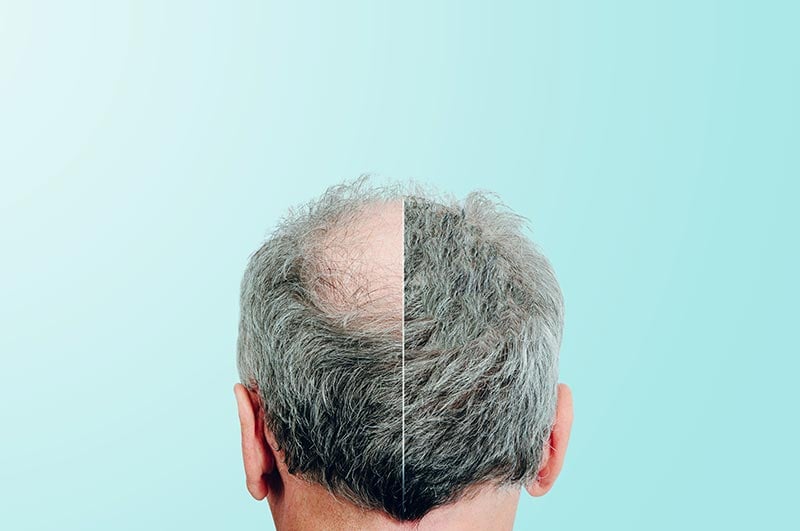Do Transplanted Hair Fall Out?
Hair transplantation is an effective and permanent solution for individuals experiencing hair loss. However, after the procedure, especially in the first few months, some shedding of the transplanted hair can occur. This process is typically referred to as “shock loss” and is a natural part of the hair transplant process. Shock loss usually appears within the first few weeks after the transplant and is generally associated with the hair follicles adjusting to their new positions.
The shedding of transplanted hair is typically a temporary situation that allows the hair follicles to grow back healthily. After the shock loss phase, the follicles begin to regenerate hair, and new, stronger strands replace the shed hairs. So, what exactly is shock loss, and why does it occur? Below are detailed insights into the shock loss process after a hair transplant.


İÇİNDEKİLER
What is Shock Loss After Hair Transplant?
Shock loss is a temporary hair shedding process that occurs as the hair follicles adjust to their new positions after a hair transplant. It typically appears within the first 2-4 weeks following the procedure and causes some of the transplanted hair to fall out. Shock loss is a natural process observed in many individuals who undergo hair transplant surgery and is generally not a cause for concern.

What Causes Shock Loss?
Shock loss is caused by the hair follicles attempting to adjust to their new positions and the microtrauma that occurs during the hair transplant procedure. When hair follicles are harvested from the donor area and placed in the new recipient area, they enter a resting phase to adapt to the change. During this time, hair production temporarily stops, causing the transplanted hairs to shed. However, since the hair follicles remain alive, they will eventually become active again and start producing new hair.
Shock loss is an indication that the hair follicles are healthy and preparing for the growth cycle. This shedding is not limited to the transplant area; it can also occur in the donor area. It is important to remember that the new hair that grows after this process will be stronger and healthier.
Will Hair Grow Back After Shock Loss?
Yes, hair will grow back after shock loss. Once the shock loss phase is over, the hair follicles become active again, and hair begins to grow. New hair typically starts growing in the third month, and the process continues for 6-12 months. The hair that grows after shock loss is usually thicker and healthier.
The shedding of hair during shock loss does not mean that the hair follicles are permanently lost. On the contrary, it signals that the follicles are adapting to their new environment. To ensure that the newly grown hair becomes permanent, it is essential to follow post-hair transplant care instructions and use products that support the nourishment of the hair follicles.
What Should Be Considered During Shock Loss After Hair Transplantation?
During the shock loss process, certain precautions can be taken to support the healthy growth of hair follicles. First, the instructions given by the doctor must be strictly followed. Keeping the scalp clean is crucial to reduce the risk of infection and support the adaptation process of the hair follicles. Additionally, heavy physical activities that may irritate the scalp should be avoided.
It is also important to control stress levels during the shock loss process. High stress can increase hair loss and negatively affect the recovery process. Vitamin and supplements recommended by the doctor can be used to nourish the hair follicles and ensure a healthy growth process. It is important to be patient and wait for the hair follicles to complete their natural cycle.
How Long Does It Take for Transplanted Hair to Fall Out?
The shedding of transplanted hair occurs within the first few weeks after the hair transplant. This process is related to the adaptation of the hair follicles to their new location and is commonly referred to as shock loss. The shock loss process starts between 2-4 weeks after the hair transplant and typically completes within 6-8 weeks. During this period, 80-90% of the transplanted hair may fall out, but since the hair follicles remain intact, this is not a cause for concern.
After the transplanted hair falls out, the hair follicles become active again, and new hair starts to grow from the third month. The full density of the hair after the transplant usually takes up to 12 months to achieve. During this period, the newly grown hair thickens and gains a natural appearance.
Consult Now!
Fill out the form to get detailed information about the hair
transplant process and personalized solutions tailored for you!
What Can Be Done to Reduce Shedding After Hair Transplantation?
Shock loss after hair transplant cannot be completely prevented, as it is a natural part of the hair transplant process. However, certain measures can be taken to ensure the shock loss process is completed in a healthier and faster manner. First, it is important to follow the care instructions provided by the doctor after the hair transplant. The scalp should be kept clean, and appropriate products should be used to prevent the risk of infection.
Supplements containing biotin, zinc, and B vitamins can be used to nourish the hair follicles and minimize shedding. These vitamins help strengthen the hair follicles and promote the production of healthier hair strands. Additionally, it is essential to handle the scalp gently after the transplant and avoid actions that may cause irritation.
Another important point is to manage stress levels. High stress can increase hair loss and prolong the recovery process. Relaxation techniques such as yoga, meditation, or light exercise can help promote the healthy growth of hair follicles. Regular doctor visits and using the recommended products will support the hair follicles after the transplant and help you navigate the shock loss process more easily.
